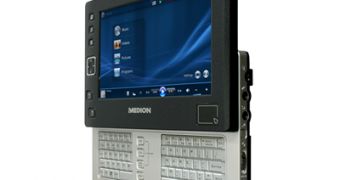There are two market segments which are not dominated by Intel made central processing units, the servers and the mobile markets and the biggest CPU manufacturer in the world wants them too. In order to accomplish this feat Intel prepares the launch of a new mobile computing platform called "Montevina small form-factor" or "Montevina SFF" for short. This new platform should significantly reduce the size of the already thin and light notebooks and it can also be used as the stating point of building UMPCs (ultra-mobile personal computers).
One of the biggest problems that are faced by companies trying to make their mobile computing devices smaller and lighter is that a lot of the hardware components are coming in fixed sizes, like the hard disk drives, so the only thing to do is to make the processing units and the motherboards smaller, but this approach leads to a big increase in the complexity of the said chips. While the chips themselves are pretty small, their external packaging solutions are quite bulky when compared to the size of the housed components. According to the news site xbitlabs Intel tries to overcome this limitation by introducing a new generation of chips which are using smaller packages.
Currently the mobile computing industry is separated into two groups, the laptop and notebook group, which is powered by Intel solutions like the Santa Rosa platform and the UMPC group which uses a smaller form factor platform based on the Napa design. The Napa is a small for factor platform which is more suited for ultra mobile devices as it features a smaller size, but is also sports a decrease computing ability. The incoming Montevina small form factor mobile platform is designed with mobility in mind as Intel aims at reducing the package area of Intel Penryn SFF processor, Cantiga GS GMCH as well ICH9M SFF chips to 1415mm², from 3342mm² which is the typical size of the currently used platform.
The introduction of the new platform will help Intel increase its market lead in the mobile computer's segment but will also boost overall sales of UMPC devices as they will become much more portable thanks to the size reduction. As the manufacturing company also plans to use the Montevina small form factor mobile platform to build laptops and notebooks, they too will benefit from that move, as they will become lighter and thinner.

 14 DAY TRIAL //
14 DAY TRIAL //